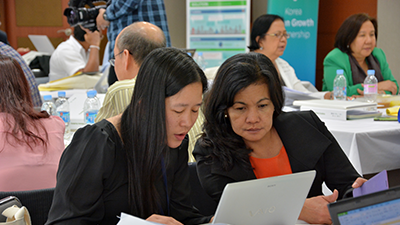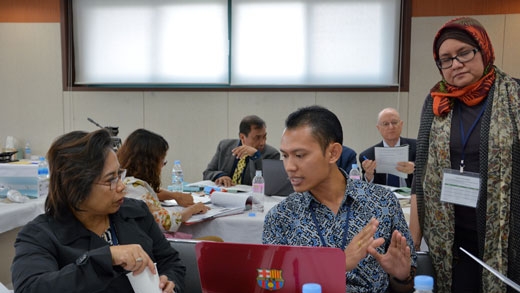Asian cities are acutely aware of the need to manage climate risk, and information and advice about climate-smart capital investment planning were in high demand at a City Creditworthiness Academy workshop held in Seoul.
“Climate change affects us significantly, and it’s easy to see – the effect of sea level rise on fresh water and flooding. Now we have a green growth strategy and a policy for the adaption and mitigation of climate change,” said Nguyen Trung Viet, manager of the Ho Chi Minh City Climate Change Bureau’s Climate Change Steering Board.
Keen to train staff, Nguyen participated with colleagues from departments including planning and investment and finance. “We learned a lot. Immediately, I will apply [climate-smart] capital investment planning. This is very important for Ho Chi Minh City.”
Other cities were under pressure to meet carbon emissions targets set by national governments but lacked the know-how for implementation. Some faced the challenge of managing population growth and pollution and asked for information on how to make conventional projects more climate-smart.
“I want my city to be clean and green, but we don’t have a sewage system, and our canals are polluted,” said a mayor from Sri Lanka. Officials from a city in Bhutan were proud of their efforts to protect the environment but had questions about monitoring to ensure their plans are working.
The Academy, part of the World Bank’s Low-Carbon, Livable Cities Initiative, aims to help cities improve their finances and access to capital so they can deliver better services and invest in low-carbon development.
At a workshop held in Nairobi last year, participants said they lacked access to technical assistance for planning climate-related infrastructure projects and structuring long-term finance options. In response, the Seoul workshop expanded its program with a new session on climate-smart capital investment planning.
Climate-Smart Capital Investment Planning
A capital investment plan is a policy tool used by local governments that forecasts major capital projects and acquisitions, such as municipal power plants, modernization of a water supply system, or the replacement of streetlights.
It allows governments to prioritize the funding and timing of urgent projects, while planning for others in the future. A well-designed plan may help local governments to get better bond ratings and lower interest rates on debt.
This process can be linked to meeting and implementing climate change goals and initiatives.
Governments can evaluate alternatives for each proposed project through climate-smart and cost effectiveness criteria, helping them understand how a project can have a lower carbon output compared to those designed through conventional methods.



